It is not uncommon to accidentally add too much of an ingredient to a recipe and feel like it’s messed up beyond repair. There are a lot of ways that you can attempt to fix these cooking mistakes though. Read on for a list of common cooking mistakes and how to fix them. Plus, a few tips on how to prevent cooking mistakes!
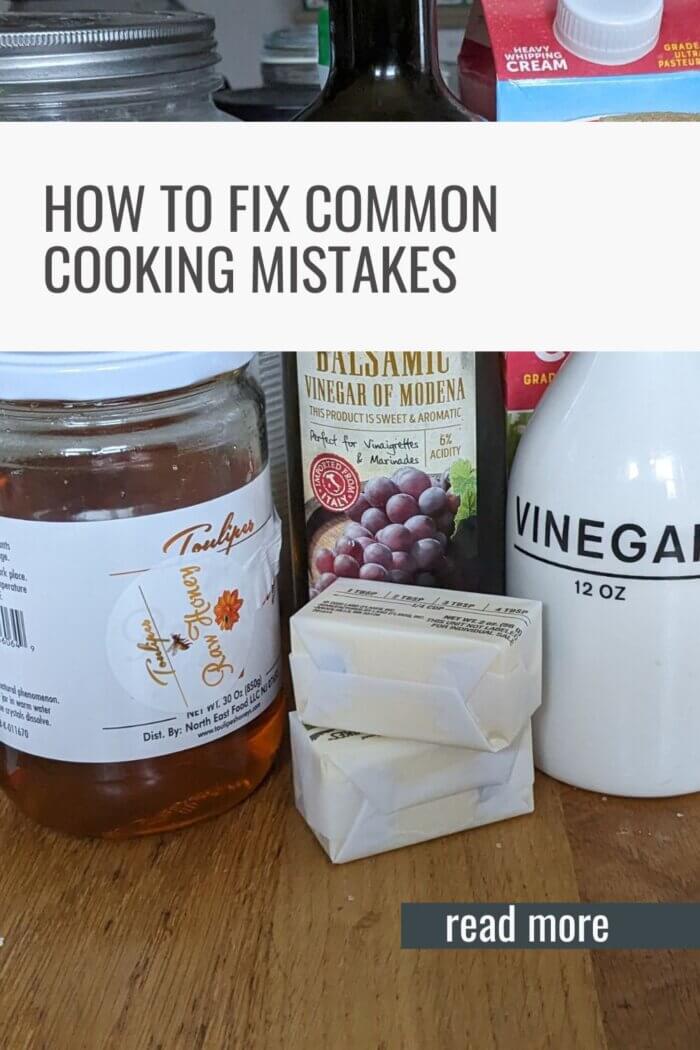
Fixing these cooking mistakes can be broken down into three big categories that get more specific depending on the problem. These categories are dilute, balance, and change.
Dilute typically means increasing other ingredients which can significantly increase the volume of food you’re creating.
Balance typically means increasing specific ingredients that can be used to complement each other.
Change typically means trying to alter the entire direction that your meal was going. This is primarily used for over-salted food in our house.
Some of the explanations may seem redundant but I wanted to list them for each problem so that you don’t have to scroll up and down the page to see if you’re missing info!
Check out our Beginner Home Cook Essentials Guide for a list of pantry supplies that can help you correct some of these common cooking mistakes!
How to fix food that is too salty:

Dilute it:
Add more of the unseasoned ingredients that your recipe calls for. This will increase the volume of the dish, diluting the seasonings. Don’t forget that when you are making a soup or a sauce, the liquid evaporates which makes the seasonings stronger. If you’re worried that you will have too much of the food by adding more ingredients, take half of the oversalted product and correct that. The other half can be frozen and saved for another time, or it can be thrown out. Throwing it out hurts, but it’s better to throw out half now with fewer ingredients than more later.
Balance it:
It may not be too salty, it may just need more of other textures/flavors. Try adding acid or fat to the recipe. This might mean increasing what the recipe calls for in the acid/fat category or deciding what fats and acids complement your dish.
Change it:
If there’s only one element of the dish that is too salty, try to change what the overall dish is going to be. If it’s oversalted meat, you can turn it into a soup of some kind where you won’t need to salt the soup as much. A broth or sauce that’s too salty can have rice added and be turned into a sort of soup.
How to fix food that is too spicy
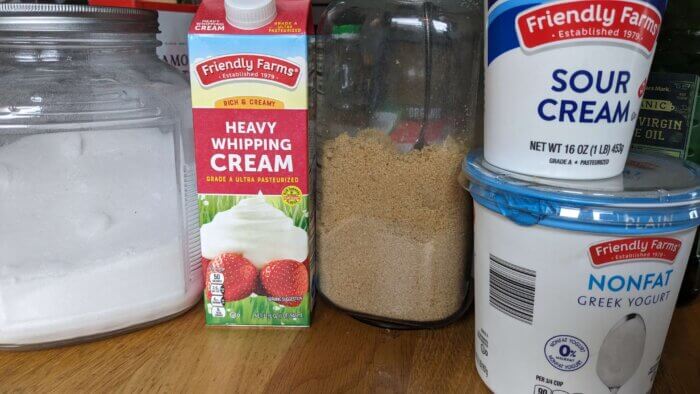
Dilute it:
Add more of the non-spicy ingredients that your recipe calls for. This will increase the volume of the dish, diluting the spice.
Balance it:
Food that is too spicy can be counteracted by adding dairy products such as milk or sour cream, or sweetness. Sweetness can be added to spicy foods via sugar or even carmalized peppers and onions.
How to fix food that is too acidic:
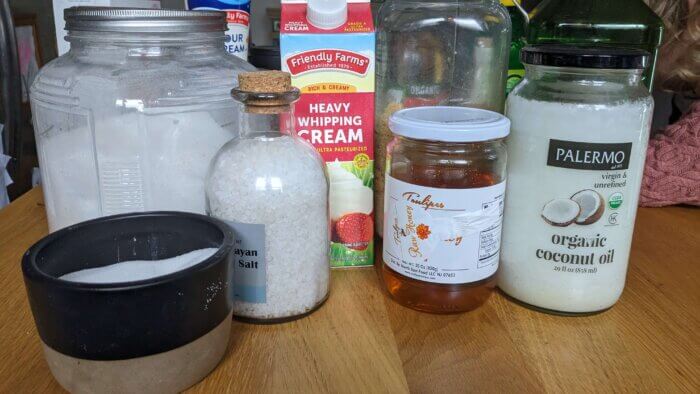
Dilute it:
Add more of the unseasoned ingredients that your recipe calls for. This will increase the volume of the dish, diluting the acidity.
Balance it:
It may not be too acidic, it may just need more of other textures/flavors. Try adding fat, salt, or sweetness to the recipe. A dish can be too acidic just by the nature of the ingredients (think tomato sauce). Depending on what the dish is, you can add sugar, carmalized onions, apples or applesauce, brown sugar, or honey.
How to fix foods that are too sweet:
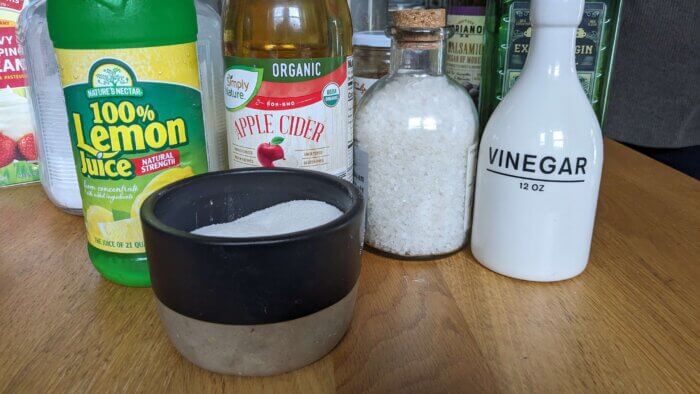
Dilute it:
Add more of the non-sweet ingredients that your recipe calls for. This will increase the volume of the dish, which will help to level the sweetness.
Balance it:
Add acidity or salt. A splash of lemon juice, vinegar, or a pinch of salt can soften the sweetness. This is especially true in frostings! If you’re finding your buttercream frosting to be too sweet, add a pinch of salt, mix thoroughly and see what happens.
How to fix foods that are too bitter:
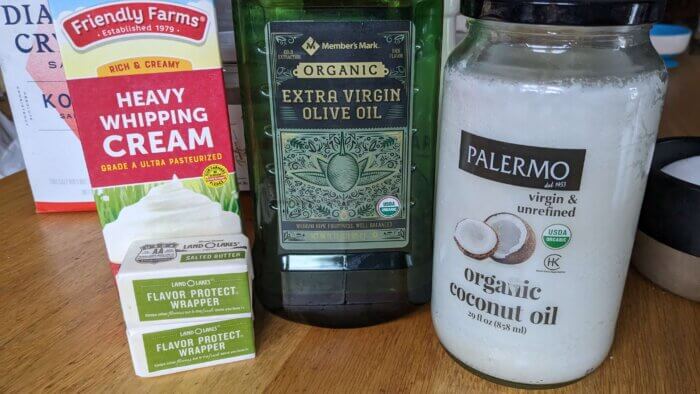
Food that’s too bitter is typically from food being burnt or overcooked. Because of this, you can’t just dilute a bitter dish. Bitterness from overcooking or burning is common when herbs are added at the wrong time or cooked for too long.
Balance it:
Add a fat product to counteract the bitterness. This includes butter, cream, or oil. Also, salt reduces our sense of bitterness by bringing out the other flavors in the dish. Typically, we turn to sweetness to balance out bitterness, so consider adding a pinch of sugar or honey to the dish as well.
How to fix food that is visually burnt:
This one is harder because burnt food is typically passed the point of no return. If it’s a baked good such as cookies or bread, you can use a micro planer and remove the burnt parts. If it’s a burnt piece of meat, you could possibly salvage around the burnt parts. But for the most part, burnt food either needs to be consumed with lots of unburned sides or a good glass of wine!
How to prevent some common cooking mistakes:
Read the recipe:
The first way to prevent the most common cooking mistakes is to read the recipe before you start cooking. Read it the whole way through and then make sure you have all of the ingredients necessary.
I also recommend reading reviews if it is an online recipe. Reviews can help you prevent mistakes others have made or adjust common complaints. Reading reviews can also help you decide if you should follow through with the recipe. There are plenty of recipes online where the ingredient list sounds good but then as you read the directions, there are things missing or that don’t make sense.
Mise en place:
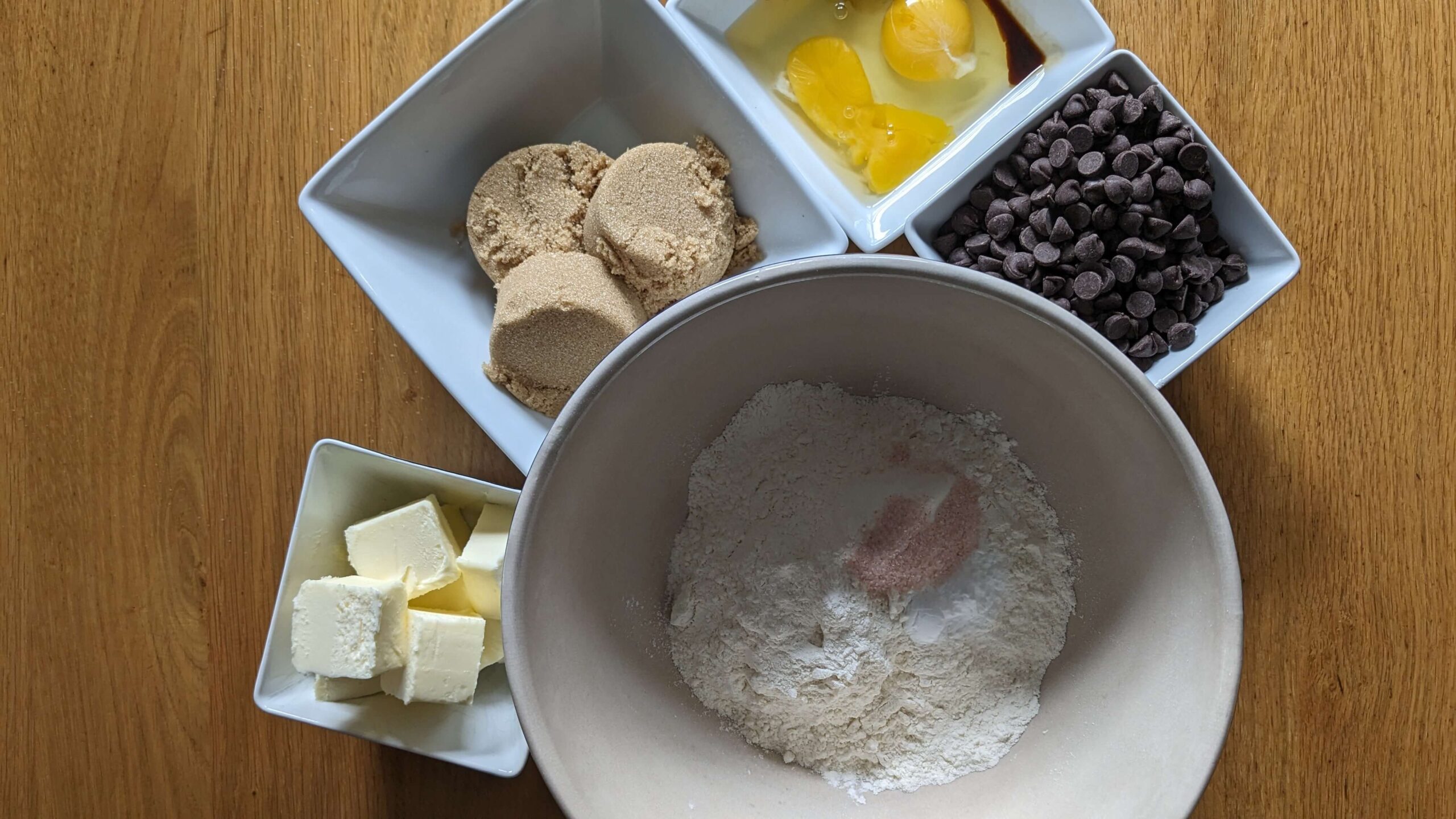
This is a term you’ll find often in beginner guides and online. It means preparing all the ingredients ahead of time, (literally it translates from French to “put in place”. This includes cutting and measuring ingredients. It’s a good habit to get into because it ensures that you’ve read the recipe ahead of time which means you can ensure that you have all of the correct ingredients on hand.
Doing this also helps to make sure that you are not rushing to get ingredients as things are ready. This prevents overcooking or accidentally over or under seasoning due to misreading the recipe.
Buy quality ingredients and know your ingredients:
This is hard if you’re on a budget. If you can’t buy high-quality items, try to find the best in your price range. Test what you have and make notes about what you do and don’t like. Do research on what other brands are out there in your price point. Know what the brands that you use have in their favor or working against them. I buy whatever salt our local discount market has on hand. Lately it’s been Diamond Crystal Kosher salt. From reading and research, I’ve learned that it’s about half as salty by weight as other salts. This means that I can expect to need nearly double the amount of salt that a recipe calls for when I’m using this particular ingredient.
Let us know in the comments if any of these tips will be helpful in your kitchen. Is there anything that we forgot?
Save it for later!
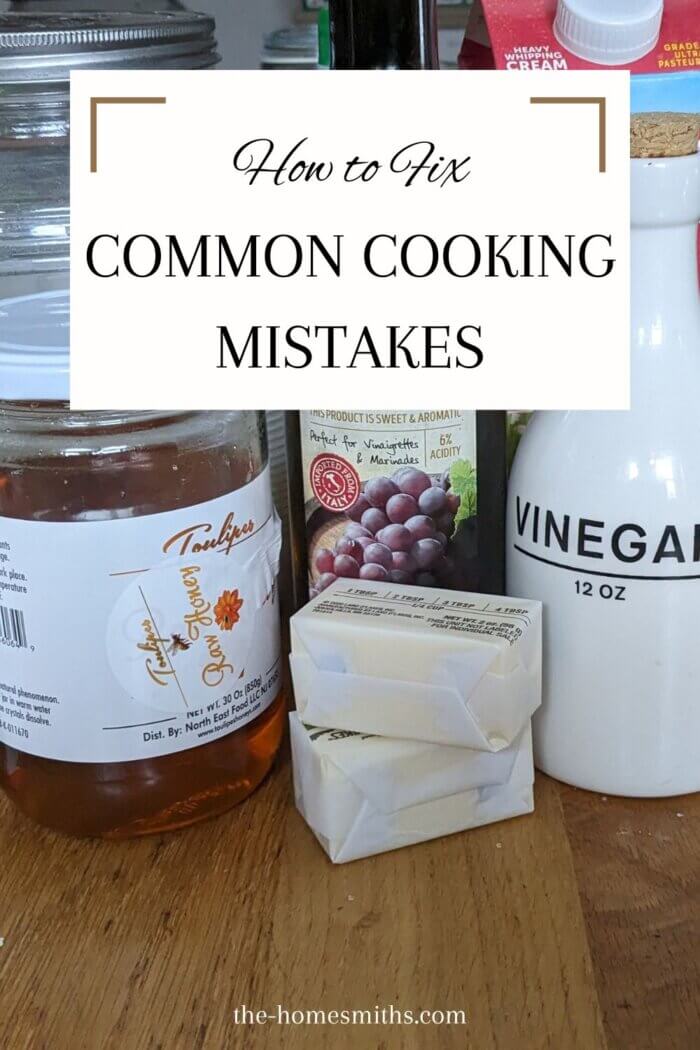

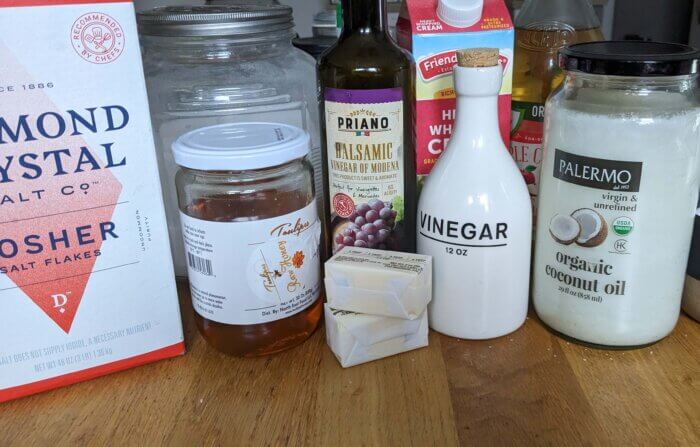
Whenever I make chili it’s too picky for my littles… This will help so much! Thank you!
I’m so glad, thank you!
Thanks for the easy tips! This will definitely come in handy!😁
Thank you! I’m so glad!
This is great! Thanks 🙂
Thanks!
Great info! I think sometimes we are quick to give up when something goes wrong with a dish. Thank you!
Thank you! I agree!
This is really useful info. I also liked your home cook essential guide!
Thank you! That’s so encouraging!
Thank you! The point about knowing your brands is so accurate and helpful!
Thanks for the encouragement!